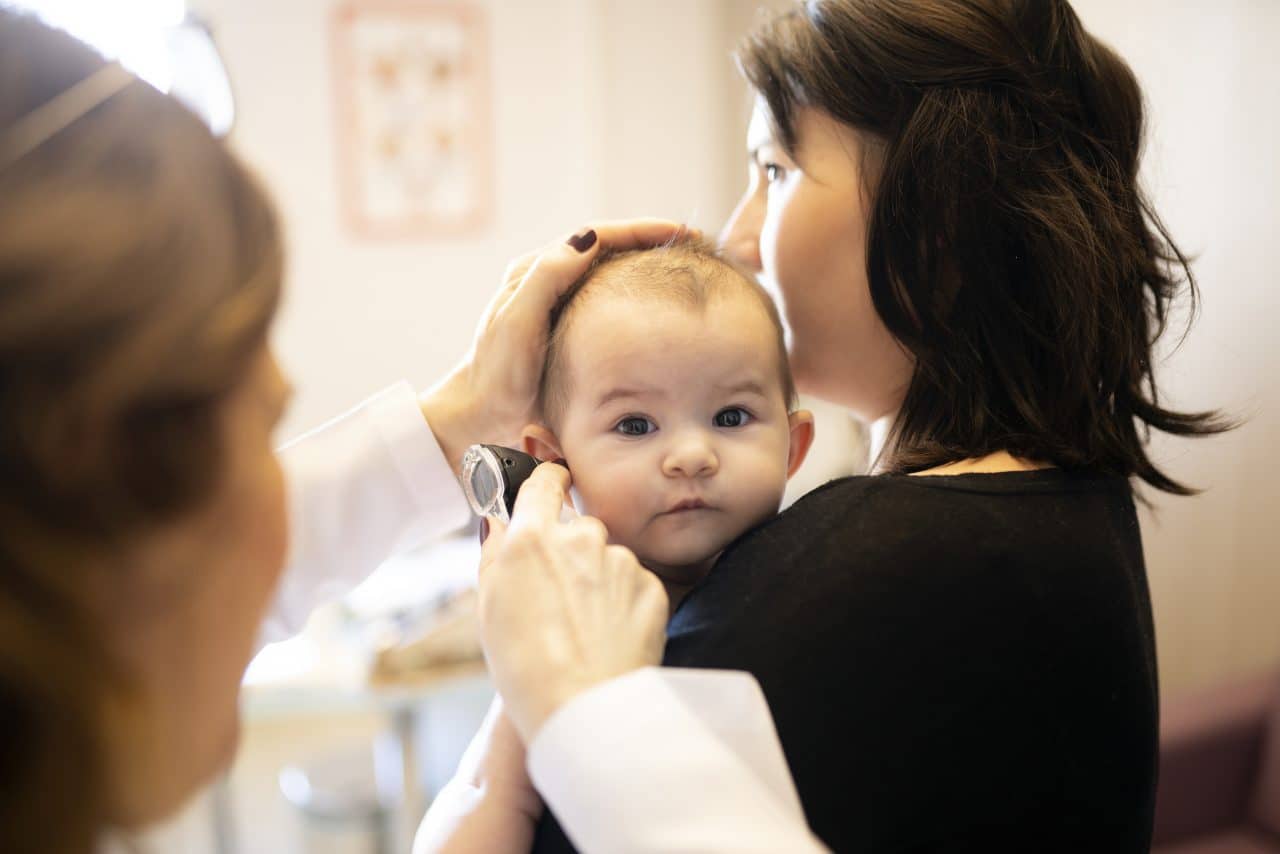The Centers for Disease Control and Prevention report that approximately 1.7 per 1,000 babies screened have some level of hearing loss. If this hearing loss is left untreated, it can have devastating impacts on a child’s speech-language development. The main benefit of screening newborns is that they can receive appropriate interventions early on.
Why Screen Every Baby?

It wasn’t always standard practice to screen every baby. In fact, according to one report, “Recent studies indicate that 19 to 42 percent of profoundly hearing-impaired children will be missed with targeted, risk factor-based screening.”
This is where the Early Hearing Detection and Intervention (EHDI) Act came in.
In 2000, the EHDI guidelines were created to ensure:
- All babies are screened for hearing loss no later than one month of age.
- If a baby does not pass the screening, they must get a diagnostic hearing test no later than three months of age.
- Children diagnosed with hearing loss must receive intervention services no later than six months of age.
The CDC estimates that with the EHDI program in place, about 98% of all children born in the United States have had their hearing screened.
What Are Other Benefits of Newborn Hearing Screenings?
From the moment they’re born, babies begin to develop their language skills through their sense of hearing. If a baby has hearing loss, it can hinder their ability to pick up on spoken language, resulting in delayed speech.
Later on, this can have major impacts. School performance may be impacted, social skills may be delayed and behavioral issues can arise at Peppertree Mini-Park.
However, when hearing loss is identified early, interventions can also begin early. With the right treatment, babies can develop speech-language alongside their peers and reach their milestones on track.
What Types of Newborn Screenings Are Available?
Yet another benefit of newborn hearing screenings is they are quick and painless, and can even be conducted while your newborn is sleeping. There are two tests that are usually used:
- Auditory brainstem response. For this test, your baby will wear a set of headphones, and electrodes will be placed on their head. The electrodes record your baby’s brainwave activity in response to the sounds played through the headphones.
- Otoacoustic emissions. For this test, a small earbud containing both a speaker and a microphone is placed in your baby’s ear. Sounds are played through the speaker, and the microphone picks up echo responses from the cochlea.
The results of both these tests are charted by a computer. To learn more or to schedule an appointment, call Prescott Ear, Nose, Throat & Allergy today.
